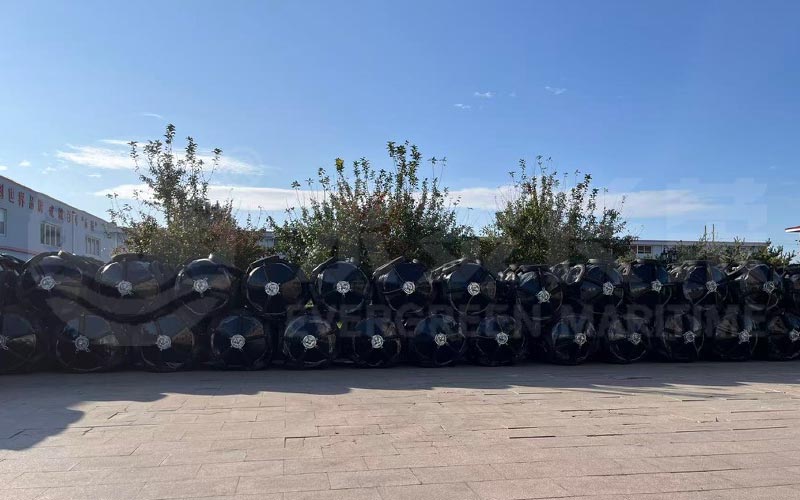To prevent small-scale manufacturers of foam fenders from passing off inferior products as high-quality ones, you can exercise control from the following multiple aspects:
Preliminary Investigation
• Understand the basic information of the manufacturer
• Check business registration information: Use platforms like the National Enterprise Credit Information Publicity System to review basic information of the manufacturer, such as registration time, registered capital, business scope, and operational status. Manufacturers with a longer registration time, higher registered capital, and normal operational status are generally more reliable.
• Conduct on-site factory visits: Visit the manufacturer’s production base to observe the factory scale, the sophistication of production equipment, the cleanliness of the production environment, and the standardization of management. Modern production equipment and an orderly production process usually indicate higher product quality.
• Examine production qualifications and certifications: Request the manufacturer to provide relevant production qualification certificates, such as ISO9001 quality management system certification and industry-standard certifications. These certifications prove that the manufacturer’s production management and product quality meet certain standards.
• Learn about the manufacturer’s market reputation
• Search for customer reviews: Look for evaluations and feedback from other customers about the manufacturer’s products through online searches, industry forums, and e-commerce platforms. Pay attention to the authenticity and objectivity of the reviews to understand the product’s performance and quality in actual use.
• Consult peers or partners: Inquire with other enterprises in the same industry, port operators, or shipping companies about their knowledge and usage experience with the manufacturer. Their practical experience can provide valuable references.

Product Quality Assessment
• Inspect product appearance
• Surface flatness: High-quality foam fenders should have a flat and smooth surface without obvious defects such as bubbles, cracks, or scratches. An uneven surface may affect the fender’s performance and lifespan.
• Color uniformity: The product’s color should be uniform without significant color differences. Uneven color may indicate problems in the production process, such as improper mixing of raw materials or inadequate process control.
• Clarity of markings: The markings on the fender should be clear and accurate, including product model, specifications, manufacturer, and production date. Unclear or missing markings may imply unreliable product quality.
• Test product performance
• Request the manufacturer to provide test reports: Reputable manufacturers should be able to provide product performance test reports, including indicators such as energy absorption performance, reaction force performance, compressive strength, and corrosion resistance. Carefully review the authenticity and validity of the test reports to ensure the product meets relevant standards and requirements.
• Conduct sampling tests: If possible, select a portion of the samples provided by the manufacturer for third-party testing. Choose a qualified and reputable testing agency to test the key performance indicators of the product and verify the authenticity of the manufacturer’s test reports.
• Check raw material quality
• Understand the source of raw materials: Inquire about the source and brand of the raw materials used by the manufacturer. High-quality raw materials are the foundation for producing high-quality products. Choosing raw materials from well-known brands can reduce product quality risks.
• Examine raw material quality certificates: Request the manufacturer to provide quality certificates for the raw materials, such as quality inspection reports and material certificates. These documents can prove that the raw materials meet relevant standards and requirements.
Contract and After-sales Guarantee
• Sign a detailed contract
• Specify product quality standards: Clearly define the product quality standards and technical requirements in the contract, including performance indicators, dimensional tolerances, and appearance requirements. Defining quality standards can avoid quality disputes during product delivery.
• Agree on acceptance methods and procedures: Specify the acceptance methods and procedures in the contract, including the acceptance time, location, standards, and procedures. Defining acceptance methods can ensure that the delivered products meet the contract requirements.
• Stipulate liability for breach of contract: Clearly define the manufacturer’s liability for breach of contract in the contract if they provide inferior products, such as product return, replacement, and compensation for losses. Defining liability for breach of contract can constrain the manufacturer’s behavior and protect your legitimate rights and interests.
• Pay attention to after-sales guarantee
• Understand after-sales service content: Inquire about the after-sales service content provided by the manufacturer, such as product maintenance, replacement, and technical support. Comprehensive after-sales service can ensure timely resolution of product problems and reduce your losses.
• Review after-sales service commitments: Request the manufacturer to provide after-sales service commitments, including the response time for after-sales service and the deadline for problem resolution. Clear after-sales service commitments can give you a clearer understanding of the manufacturer’s after-sales service.
